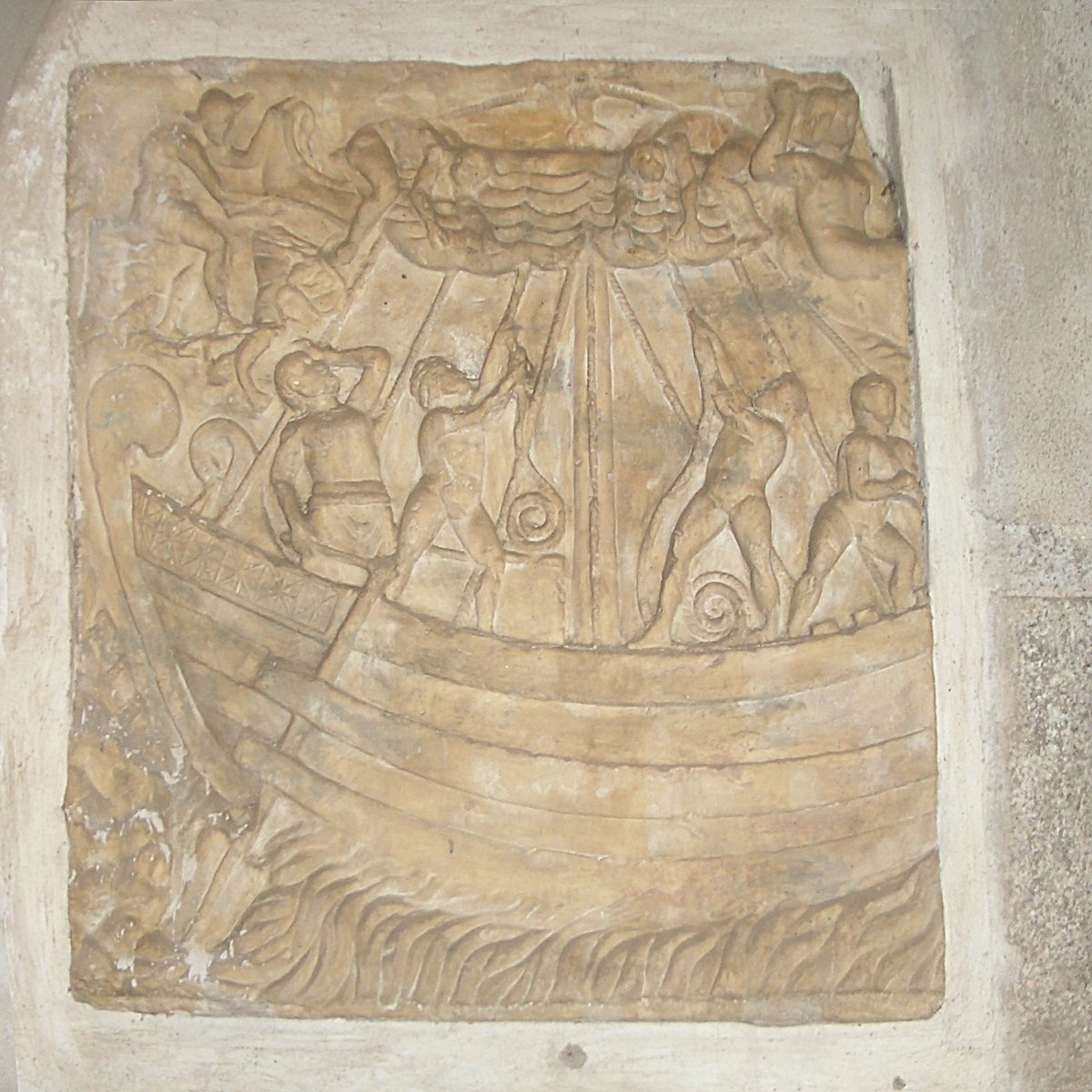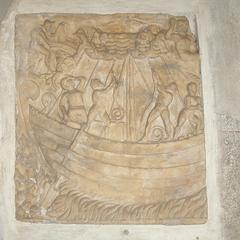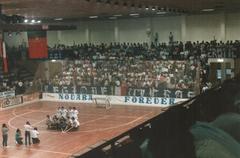
Visiting Hours and Guide for Cattedrale di Santa Maria Assunta in Novara, Italy
Article Date: 01/08/2024
Introduction to Cattedrale di Santa Maria Assunta
The Cattedrale di Santa Maria Assunta in Novara, Italy, is a magnificent testament to the city’s rich historical and architectural heritage. Situated in the heart of Novara, this cathedral has evolved from its origins as a pagan temple to its present Neo-Classical splendor. The site initially hosted a Roman temple dedicated to Jupiter, which was replaced by a Christian basilica between 350 and 400 AD, signaling the early Christian influence in the region (Wikipedia). Over the centuries, the cathedral has undergone numerous transformations, reflecting the architectural styles of various eras, including Romanesque, Gothic, Baroque, and Neoclassical (Wikipedia). Designed by the renowned architect Alessandro Antonelli in the mid-19th century, the current structure is a prime example of Neo-Classical architecture (Wikipedia).
This guide provides comprehensive information on the Cattedrale di Santa Maria Assunta, covering its historical background, significant architectural features, practical visitor information, and nearby attractions.
Contents Overview
- Introduction
- Historical Background
- Early Beginnings and Pagan Roots
- The First Christian Basilica
- Medieval Transformations
- Renaissance and Baroque Modifications
- Neo-Classical Rebuilding
- Recent Restorations
- The Baptistry
- The Canonica and Cloister
- Musical Heritage
- Architectural Significance
- Visitor Information
- Visiting Hours
- Tickets
- Travel Tips
- Nearby Attractions
- FAQ Section
- Conclusion
Historical Background
Early Beginnings and Pagan Roots
The site of the Cattedrale di Santa Maria Assunta in Novara has a rich and layered history that dates back to antiquity. Originally, the location was home to a pagan temple dedicated to Jupiter, reflecting the religious practices of the Roman era. This temple was eventually replaced by a Christian basilica between 350 and 400 AD, marking the early Christianization of the region (Wikipedia).
The First Christian Basilica
The initial Christian structure was a basilica dedicated to Santa Maria. Over the centuries, this early church underwent numerous modifications and expansions to accommodate the growing Christian community and its evolving liturgical needs. By the 11th century, the basilica had become a significant religious center, leading to the construction of a more substantial church on the same site (Wikipedia).
Medieval Transformations
Construction of the first major church began in the 11th century and was consecrated in 1132. This medieval church featured a mosaic floor in the presbytery and a chapel dedicated to Saint Syrus, elements that were preserved and incorporated into later structures. The church served as a focal point for the community and underwent various enhancements over the centuries (Sygic Travel).
Renaissance and Baroque Modifications
Significant changes occurred in the 15th and 16th centuries. During the Renaissance, the church saw the addition of chapels along its lateral naves. The facade was reinforced with buttresses, and the two stair towers were demolished, leaving only the bell tower adjacent to the left transept. In 1580, Bishop Francesco Bossi ordered the demolition of the old apse, replacing it with a new rectangular choir. Further modifications were made in the late 16th century under Bishop Carlo Bascapè, who constructed a new high altar (Wikipedia).
The 17th and 18th centuries brought Baroque influences to the cathedral. In 1680, Benedetto Odescalchi restored the dome, adding a lantern. The 18th century saw gradual Baroque-style restorations under the direction of architect Benedetto Alfieri. However, these works were halted in 1792, with only the transept and some chapels completed. The project resumed in 1831 under architect Melchiori, who designed a new choir (Wikipedia).
Neo-Classical Rebuilding
The most transformative period for the cathedral came in the mid-19th century. The original medieval church was demolished to make way for a new Neo-Classical structure designed by the renowned architect Alessandro Antonelli. Construction of the new cathedral began in 1863 and was completed in 1869. Antonelli’s design incorporated elements from the previous church, including the mosaic floor of the presbytery and the chapel dedicated to Saint Syrus (Wikipedia).
Recent Restorations
The cathedral underwent a significant 12-year-long restoration project that concluded in November 2009. This extensive restoration aimed to preserve the historical and architectural integrity of the building while ensuring its structural stability and aesthetic appeal for future generations (Sygic Travel).
The Baptistry
Adjacent to the cathedral is the baptistry, a separate yet functionally integral structure. This Palaeo-Christian building dates back to the 4th-5th centuries, making it one of the oldest surviving elements of the cathedral complex. The baptistry’s ancient origins provide a tangible link to the early Christian community in Novara (Wikipedia).
The Canonica and Cloister
Behind the cathedral and the Bishop’s Palace lies the Canonica, an edifice first mentioned in a 9th-century document. Likely commissioned by Bishop Adalgisio, the Canonica was intended to house the clergy of the Novara church. The cloister of the Canonica, as seen today, dates back to the late 15th century and features an elegant quadrangular portico with ogival arches. Inside, visitors can find archaeological artifacts, sarcophagi, sculpted reliefs, and ancient inscriptions, primarily from the Roman and late-Roman periods. Noteworthy among these is a marble bas-relief depicting a ship manned by sailors and a fisherman holding a line with a fish, an example of early Christian art from the late 3rd century (Wikipedia).
Musical Heritage
The cathedral also has a rich musical heritage. Notably, composers Pietro Generali and Antonio Cagnoni served as the maestri di cappella in the years leading up to their respective deaths in 1832 and 1888. Their contributions to the cathedral’s musical tradition are remembered as part of its cultural legacy (Wikipedia).
Architectural Significance
The present-day cathedral is a prime example of Neo-Classical architecture, characterized by its grandiose scale, symmetrical design, and classical elements such as columns and pediments. Alessandro Antonelli’s design reflects the architectural trends of the 19th century while honoring the site’s historical significance. The cathedral’s interior features frescoes by the Magi di Sannazzaro, painted between 1853 and 1856, and older paintings from the 15th and 16th centuries near the secondary altars. Additionally, the cathedral houses a precious fragment of the Cross and the relics of San Marziano, who is traditionally credited with converting Novara to Christianity (Piemonte Italia).
Visitor Information
Visiting Hours
The cathedral is open to visitors daily from 8:00 AM to 7:00 PM. Please note that visiting hours may vary during holidays and special events.
Tickets
Entry to the cathedral is free, but donations are welcome to support ongoing maintenance and restoration efforts.
Travel Tips
- Getting There: The cathedral is centrally located in Novara, easily accessible by public transport or car. Parking is available nearby.
- Best Time to Visit: Early mornings or late afternoons are ideal for a visit to avoid crowds.
- Accessibility: The cathedral is wheelchair accessible, with ramps and elevators available for ease of movement.
Nearby Attractions
- Basilica of San Gaudenzio: Another iconic religious site in Novara, known for its stunning dome designed by Alessandro Antonelli.
- Novara Castle: A historic fortress offering insights into the region’s medieval past.
- Broletto: A beautiful medieval complex that now serves as a cultural center and museum.
FAQ Section
What are the visiting hours for the Cattedrale di Santa Maria Assunta?
The cathedral is open daily from 8:00 AM to 7:00 PM. Check for any changes during holidays or special events.
Is there an entry fee to visit the cathedral?
Entry is free, but donations are appreciated to help with maintenance and restoration.
How can I get to the cathedral?
The cathedral is centrally located in Novara and is easily accessible by public transport or car. Parking is available nearby.
Is the cathedral wheelchair accessible?
Yes, the cathedral is equipped with ramps and elevators for wheelchair access.
Conclusion
The Cattedrale di Santa Maria Assunta in Novara stands as a testament to the city’s rich religious and architectural history. From its early beginnings as a pagan temple to its current Neo-Classical grandeur, the cathedral has evolved through centuries of transformation, reflecting the changing artistic and cultural currents of each era. Don’t miss the chance to visit this historical gem. For more updates and information, download the Audiala app, follow us on social media, and explore other related posts.
Credible Sources and Further Reading
- Wikipedia contributors. (n.d.). Duomo di Novara. In Wikipedia, The Free Encyclopedia. Retrieved from https://it.wikipedia.org/wiki/Duomo_di_Novara
- Wikipedia contributors. (n.d.). Novara Cathedral. In Wikipedia, The Free Encyclopedia. Retrieved from https://en.wikipedia.org/wiki/Novara_Cathedral
- Sygic Travel. (n.d.). Novara Cathedral. Retrieved from https://travel.sygic.com/en/poi/novara-cathedral-poi:7175829
- Piemonte Italia. (n.d.). Cattedrale di Santa Maria Assunta e San Lorenzo. Retrieved from https://www.piemonteitalia.eu/en/cultura/abbazie-e-chiese/cattedrale-di-santa-maria-assunta-e-san-lorenzo
- Citta e Cattedrali. (n.d.). Cattedrale di Santa Maria Assunta. Retrieved from https://www.cittaecattedrali.it/en/bces/48-cattedrale-di-santa-maria-assunta
- Official Website. (n.d.). Visiting Information. Retrieved from https://www.cittaecattedrali.it/en/bces/48-cattedrale-di-santa-maria-assunta
- Wanderlog. (n.d.). Cattedrale di Santa Maria Assunta. Retrieved from https://wanderlog.com/place/details/181256/cattedrale-di-santa-maria-assunta



